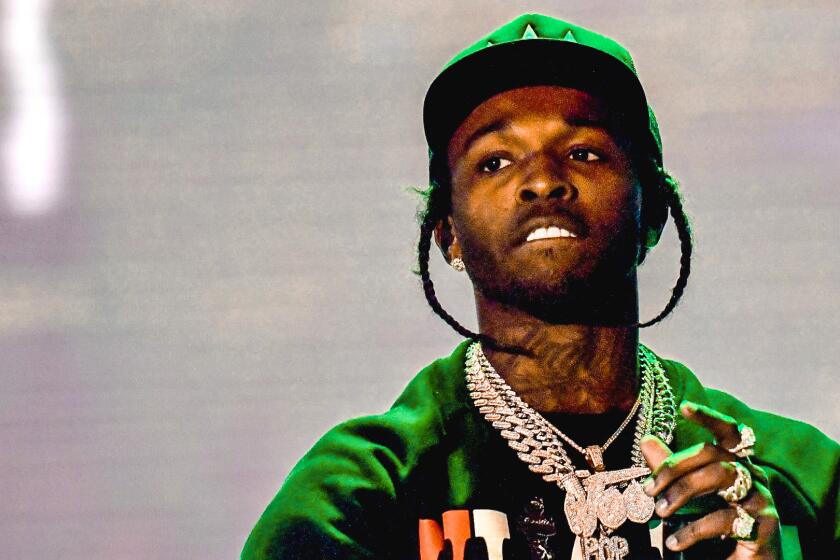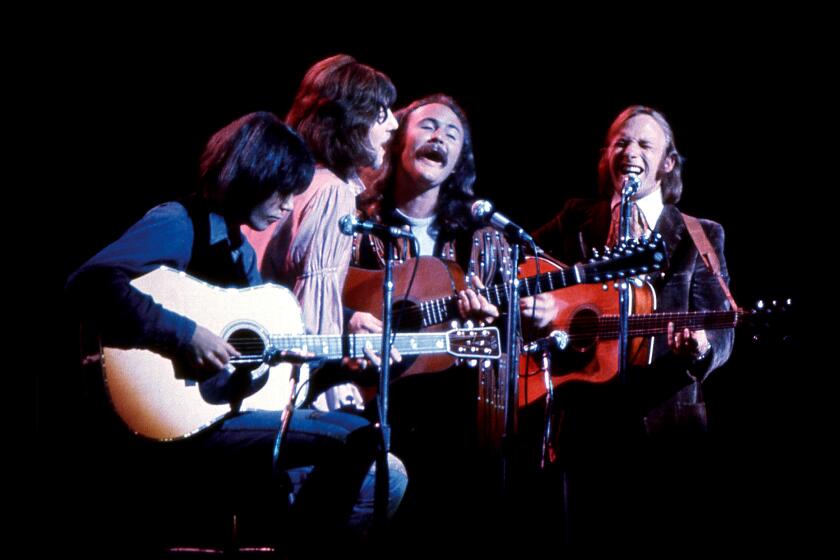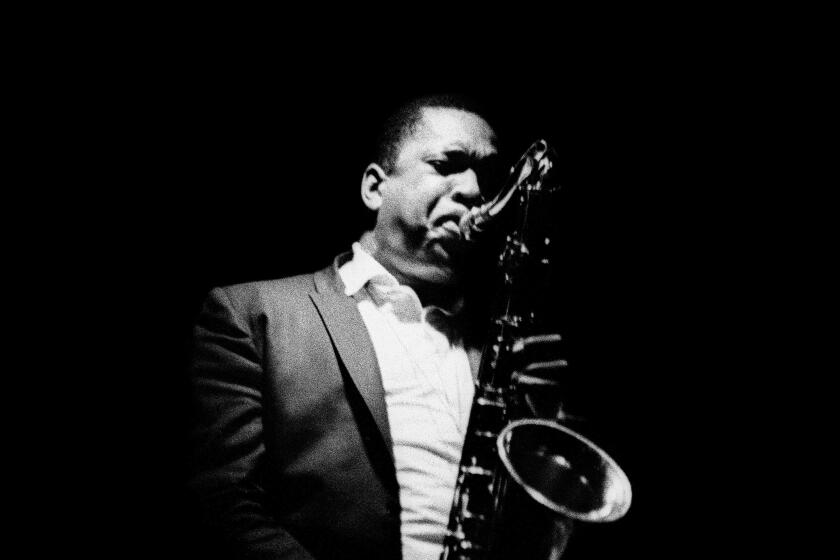JAZZ REVIEWS : Quintero, Band Makers of Melody
- Share via
COSTA MESA — Juan Carlos Quintero’s high-powered, enticing show at Mucho Gusto Friday night would have surprised anyone who knows the guitarist only through his recordings.
His two appealing Nova Records albums are low-key, falling somewhere between easy-listening Latin and what many would call New Age mood music. In person, another persona emerged, offering exuberant Latin-based sounds underpinned by a winsome jazz essence.
The show did share at least one common bond with the albums: Melody is a key element in all the aural wares of this 30-year-old Medellin, Colombia, native, who has lived in Los Angeles since the mid-’80s. At Mucho Gusto, no matter how hot things got on stage musically, mellifluous aspects were never abandoned. Even during a bombastic solo by percussionist Angel Figueroa, Quintero offered vibrant chords that kept a tuneful flavor in the forefront.
Much of the material was in medium to medium-fast tempos, delivered with vigor by Quintero, Figueroa, keyboardist Mark Gutierrez, bassist Alec Milstein and drummer Johnny Casteneda. Quintero kept the show from becoming sonically one-dimensional with subtle shifts in dynamics and keen orchestrations.
Things began with his cha-cha arrangement of the “Theme From Black Orpheus,” and right up front we heard Quintero’s distinctive tone, reaching out from his brown and white Fender Stratocaster and pulling listeners in. It was both steely and penetrating, a la Mark Knopfler of Dire Straits, and warm and muscular, recalling the majestic sound of Wes Montgomery.
Dressed in jeans, a black T-shirt and a silver-and-black checked vest, Quintero bent slightly at the waist and worked out, looking intently at his hands as he played, while the band built a scintillating rhythmic platform from which it would nudge and encourage him.
Quintero deftly blended a potent Latin rhythmic swagger with brief, repeated, catchy jazzy phrases, longer, be-bop-y, deliciously serpentine lines, and richly textured chords. Often he would climax with dancing passages made up of two notes played simultaneously an octave apart (the sort of device Montgomery introduced in the late ‘50s).
Van Morrison’s “Moondance” began with the melody tucked between bright, percussive rhythmic breaks that stood out like exclamation marks. During “Siempre,” Gutierrez was mercurial and edgy, displaying his talent for highly rhythmic improvisation. Horace Silver’s “Song for My Father” was arranged surprisingly; it went from an energetic reading of the melody to a dulcet-toned, fluid Milstein solo. For the closing “Charas!,” the musicians passed out hand percussion instruments to the audience, who created a convivial forest of sounds as the quintet played.
More to Read
The biggest entertainment stories
Get our big stories about Hollywood, film, television, music, arts, culture and more right in your inbox as soon as they publish.
You may occasionally receive promotional content from the Los Angeles Times.










